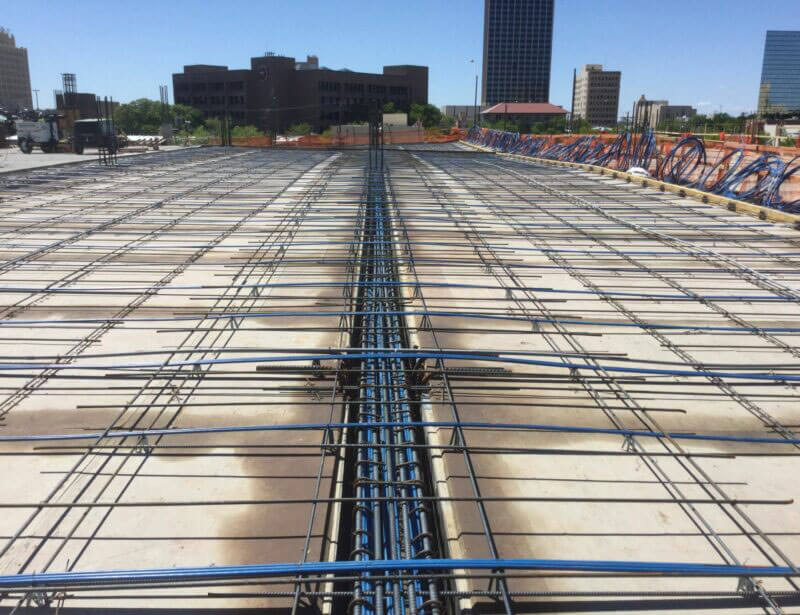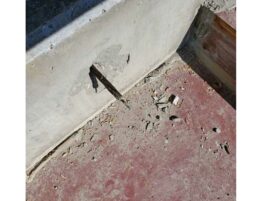
Post-tension anchors distribute the force from the tendon into the concrete around the tendon ends. Given the one-tendon-at-a-time nature of unbonded single-strand post-tensioning, each anchor is a plate that is designed to distribute the force from one locked-off tendon. The common form factor is a rectangle about 2 1/2” wide and a little over 5” tall, with a tapered hole in the middle for the tendon and a set of hardened steel wedges that lock it in place. The wedges have serrated teeth to bite into the strand, making a mechanical bond to hold it in place. There are three major applications with slightly different anchorages that are common for elevated decks.
First, there are dead ends. A dead-end is put on in the factory after the tendon has been cut to length. Depending on the manufacturer, a hydraulic press can be used to push the wedges into the cavity, forcing the wedge teeth into the sides of the strand; or a jack grabs the tendon on the bearing side of the anchor and pulls the wedges and tendon into the cavity like a lobster trap. When the wedges are pressed in, the force is significantly larger than the field jack can produce, so the wedges tend to deform the tendon and deform to match the wedge cavity – the bond is basically permanent.
Second, there are live ends. These are nailed to the concrete formwork with a special insert that makes a hole in the concrete for the jack to reach the strand. When the jack has finished stretching the tendon, a hydraulic plunger in the nosepiece pushes the wedges into the wedge cavity, deforming the strand at the wedge teeth. The strand sucks the wedges into the cavity, preventing further movement. Some of the strand does retract during this process, meaning that there is some seating loss between the fully-stressed tendon and the installed condition. If a tendon is over 120’ long, it will usually be shipped with both ends “live” to allow for a larger final effective force.
Third, there are intermediate anchors. Concrete logistics are such that it’s not always possible to pour an entire slab at once, so contractors break them up into smaller pours that are easier to place. In order to reduce the amount of formwork required, it’s common to stress the tendons and then strip the formwork for the bays that are self-supporting. This requires a special type of live-end anchor that can be slid along the tendon and installed in the middle of the slab, which is called an intermediate anchor.

